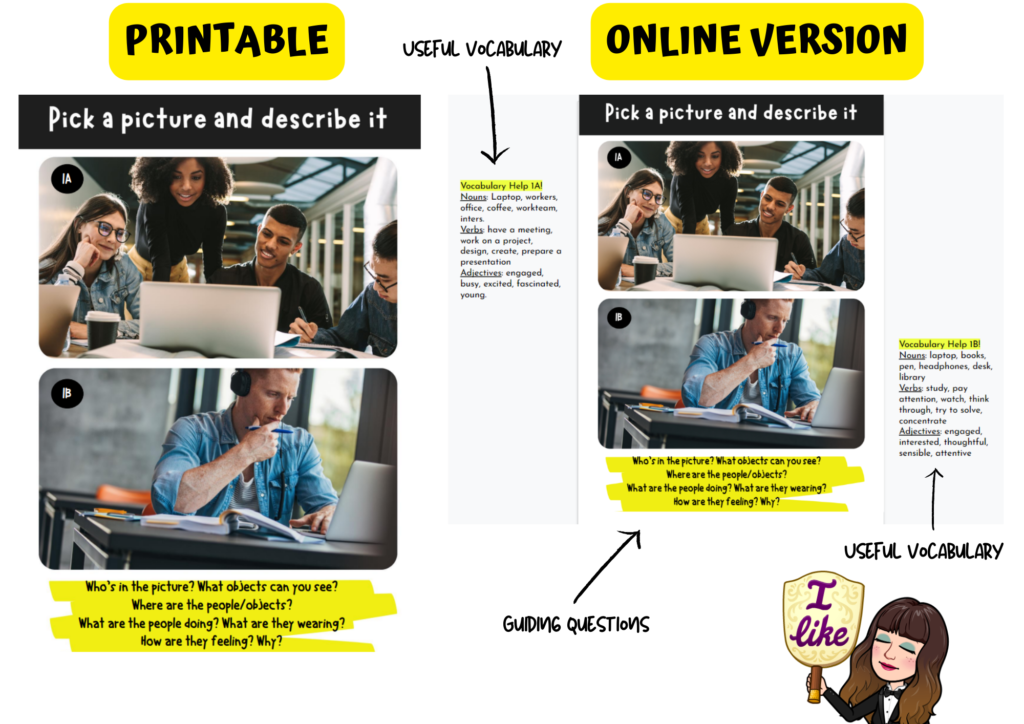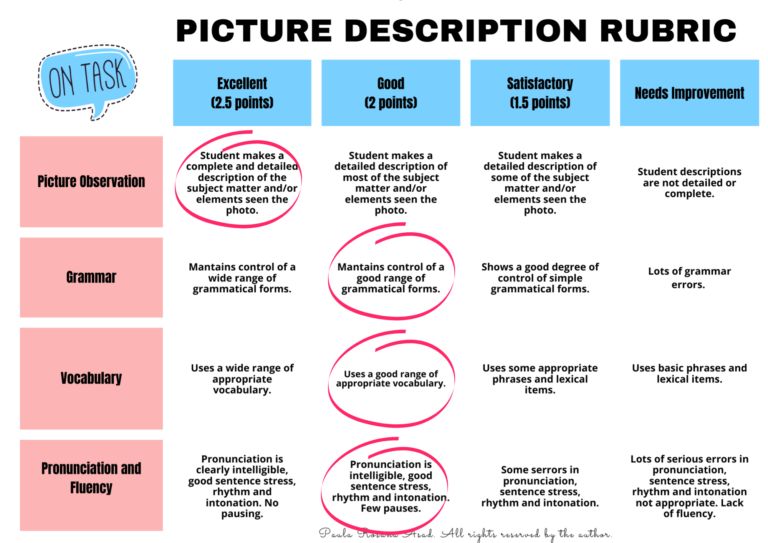Picture Description. Activities for ESL Students.
Do your students struggle with developing their speaking skills? Do your learners get stuck or can’t find the right words when describing pictures in English? Do they need extra practice to speak more fluently in the second/foreign language? Then, let me show you a helpful resource I created for my learners for picture description.
Picture Description is an essential skill that students learning a second language should master. Why? Because pictures are powerful tools that help them to think outside the box, incorporate new vocabulary, and consolidate English structures.

This is what I do …
I usually give my intermediate learners two similar pictures, and they must choose one from the pair to describe in detail. The handout I provide them with has some questions to walk them through the speaking task. They can also access the online version, where I include more complex vocabulary that they wouldn’t use if they didn’t have it.

Let me pause and set the scene for you. …
One student starts describing the picture, and the other is the one that checks the time as they should be speaking for a minute and a half approximately. Once both partners have done the task, each student from the pair should provide some feedback based on the rubrics provided.

Other exciting ESL activities that use visuals as prompts for speaking or writing!
- Teachers can get their students to explore their creative side with Bubblr. This online tool allows students to create “thought bubbles” for people or characters in photos. For instance, you can ask them to craft a story and add captions to go with the images and then share the results with their classmates.
- Compare and Contrast: Students can identify the similarities and differences between two images. This type of task can help them practice academic vocabulary and structures. What’s more, it is an excellent activity to help learners pay attention to details and analyze a text more deeply.
- Show students an image and ask them to tell you the story behind the picture. Inviting your students to interpret a piece of art or a photograph encourages critical thinking, problem-solving, and communication skills. As a result, students can gain a deeper understanding of the material and discover the power of illustration.
All in all, visuals can be a powerful tool for ESL teachers looking to enhance their students’ language skills, spark creativity, and encourage critical thinking. When used strategically, images and visuals in lesson plans can provide a valuable and effective learning experience for students of all ages.
If you’re short on time and you’d like a resource with pictures and notes for your students that you can photocopy and keep handy, then, click HERE!
More Resources and Ideas:
Flashcard Games your students will love
Have a great day!
Paula.

